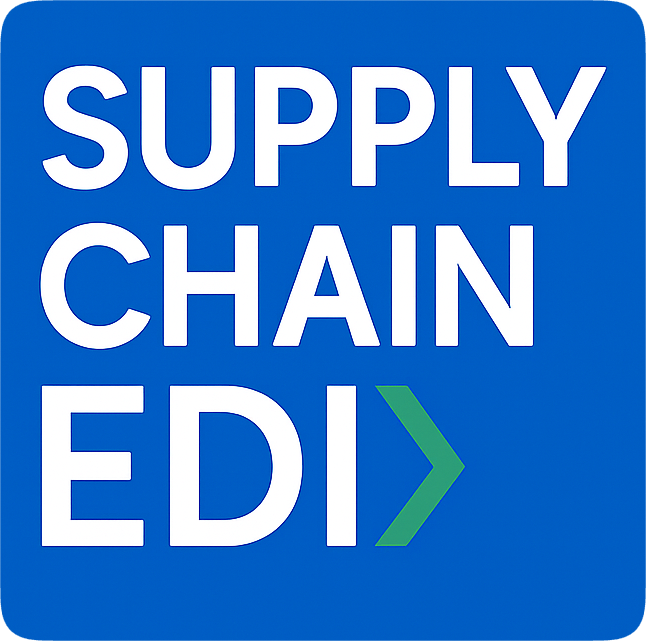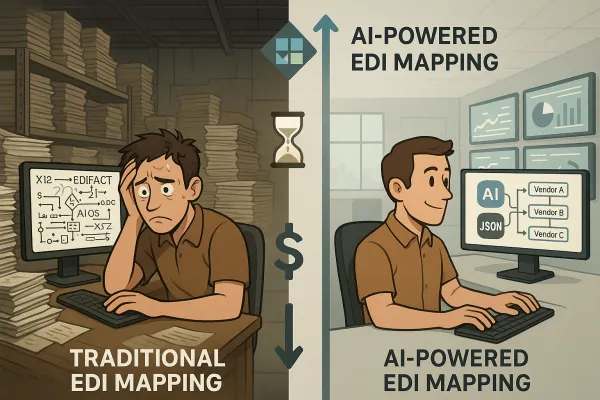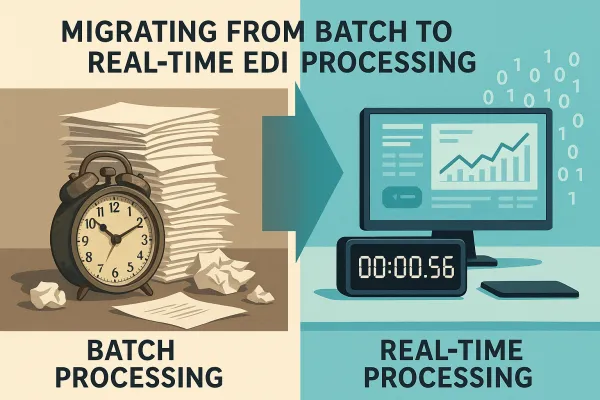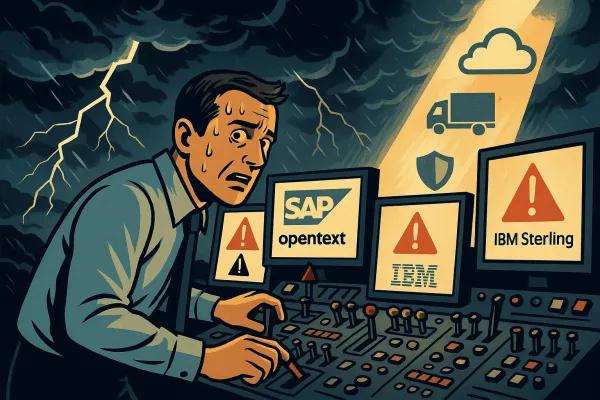The ViDA-JSON Convergence: Strategic EDI Modernization Guide for EU Compliance and Future-Proof Supply Chain Integration by 2030
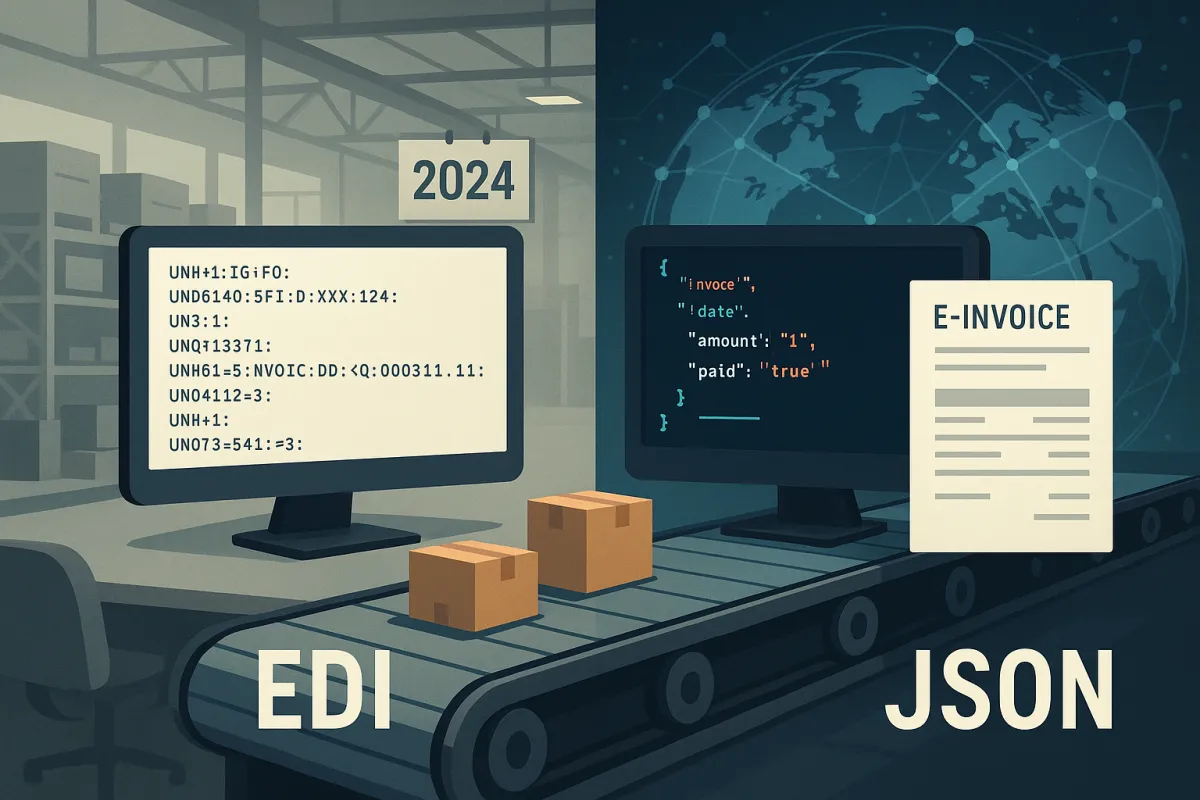
Supply chain professionals face a convergence point that could define the next decade of B2B integration strategy. The VAT in the Digital Age (ViDA) Directive, officially adopted on March 11 2025 by the Council of the EU, combined with rapid EDI market growth from $2.31 billion in 2025 to $5.30 billion by 2032, with a compound annual growth rate (CAGR) of 12.6%, creates both challenges and opportunities for forward-thinking organizations.
The question isn't whether to modernize your EDI infrastructure—companies must be capable of sending and receiving intra-EU e-invoices in ViDA-compliant formats by July 2030. The strategic question is how to leverage JSON-enabled EDI transformation to build compliance-ready systems that also position your supply chain for long-term competitive advantage.
The ViDA Mandate Reality Check: What Supply Chain Leaders Must Know by July 2030
Let's address what ViDA is estimated to reduce VAT fraud by €11 billion within the first 10 years actually means for your operations. By 2030, mandatory intra-community e-invoicing & DRR will enter into force, fundamentally changing how EU businesses exchange transaction data.
The timeline creates pressure points most supply chain teams haven't fully grasped yet. The preparation phase runs Q3-Q4 2024, followed by design phase Q1-Q3 2025, with implementation phase starting Q4 2025 onwards. Notice something? You're already in the implementation window.
Manufacturing supply chains face particular complexity because the EU obliges all 27 member states to accept a common e-invoice format (EN 16931), but member states are free to choose from a variety of transmission protocols (Peppol, EDI, email, etc.). This creates what industry insiders call "harmonized chaos"—common standards with fragmented transmission requirements.
For transportation and logistics operations, the compliance requirements extend beyond simple invoicing. Cross-border freight movements must integrate with all EU member states adopting the Peppol open exchange network, affecting everything from carrier integration software to transport execution platforms. Leading transport management software providers like Descartes are already preparing integrated solutions alongside platforms like Cargoson that address multi-modal compliance requirements.
Current Market Positioning vs. 2030 Requirements
Your current EDI setup likely handles structured data exchange, but ViDA demands something different: structured electronic format that allows for its automatic and electronic processing. This isn't just about changing file formats—it's about enabling real-time tax authority reporting while maintaining existing trading partner relationships.
The gap analysis most organizations need focuses on three areas: technical validation capabilities, automated compliance reporting, and multi-protocol transmission support. Transportation management system providers are addressing this through enhanced API connectivity that supports both traditional EDI protocols and modern PEPPOL requirements.
The JSON Transformation Imperative: Beyond Traditional EDI Modernization
Here's where strategic thinking separates winning organizations from those merely seeking compliance. JSON is highly descriptive and rich with metadata. Because it's a more modern format, every language has great support for it, and it makes integrating into your backend systems much easier.
The business case extends beyond technical convenience. Modern software developers get a practical approach to EDI through platforms that transform EDI to and from JSON, dramatically reducing implementation time and ongoing maintenance costs.
Consider the developer resource challenge. Understanding X12 and building maps back to your ERP or TMS requires reviewing individual specifications and requires a knowledgeable EDI resource. JSON transformation eliminates this bottleneck by providing an easy to understand JSON format that your existing development teams can handle without external EDI specialists.
For freight management software integration, this matters because API integrations into your TMS will allow your company to process more loads and book the best rates with your preferred carriers in real time. The same JSON-enabled approach that simplifies ViDA compliance also accelerates carrier onboarding and enables real-time freight optimization.
Technical Implementation Strategies
Three approaches dominate the JSON transformation landscape: platform-native conversion, custom development, and integrated Platform-as-a-Service (iPaaS) solutions. Platforms convert EDIFACT specifications and translate them into API-friendly JSON or XML models, supporting all documents and versions of EDIFACT across industries.
The platform approach offers significant advantages for transportation execution software integration. Developers send a JSON payload via API to the platform, which validates data against trading partner compliance requirements and converts JSON into required EDI format if validation passes. This real-time validation prevents compliance errors before they reach trading partners.
Strategic Vendor Selection Framework for ViDA-Compliant JSON-Enabled EDI
The vendor landscape is consolidating around organizations that understand both compliance requirements and modern integration patterns. Companies like Cleo Integration Cloud (CIC) provide tailored EDI and API integrations that seamlessly scale with business operations, while AWS has introduced B2B Data Interchange that generates EDI mapping code using generative AI and automates transformation of business-critical EDI transactions at scale.
Your evaluation framework should prioritize vendors demonstrating three capabilities: ViDA compliance roadmaps with concrete EN 16931 support, JSON-native API architectures, and multi-carrier shipping software integration. Established providers like SPS Commerce and MuleSoft are investing heavily in API-first architectures, while newer platforms like OpenText and comprehensive solutions including Cargoson offer integrated transport management capabilities alongside EDI modernization.
The EDI-as-a-Service model deserves particular attention. "EDI-as-a-Service" represents a new category of EDI that will define the future after 2025, offering managed EDI services that enable organizations to decrease operational complexity while redirecting internal resources towards strategic innovation.
Implementation Roadmap: Phased Approach to 2030 Compliance
Your implementation timeline needs to account for both ViDA requirements and JSON transformation benefits. This structured approach gives businesses and service providers ample time to adapt and integrate new systems before the ViDA requirements take full effect.
Phase 1 (Q4 2024 - Q2 2025) focuses on assessment and early PEPPOL adoption. Begin with pilot implementations using JSON-enabled platforms that support both current EDI requirements and future ViDA compliance. This allows you to maintain existing trading partner relationships while building new capabilities.
Phase 2 (Q3 2025 - Q2 2026) centers on core system integration. Connect your shipper TMS and freight management software to JSON-enabled EDI platforms that provide real-time validation and multi-protocol support. This phase should include carrier integration testing and automated compliance reporting setup.
Phase 3 (Q3 2026 - July 2030) involves full-scale deployment and optimization. Scale successful pilot implementations across all trading partners, complete ViDA compliance validation, and optimize for transportation spend management through integrated API connectivity.
Cost-Benefit Analysis Framework
The financial justification becomes clearer when you combine compliance necessity with operational improvements. ViDA is designed to reduce VAT fraud by up to €11 billion a year and lower annual administrative and compliance costs for EU traders by more than €4.1 billion over the next ten years.
JSON transformation delivers additional ROI through development efficiency gains. Instead of spending months on traditional EDI, API-based platforms can get you up and running in days without draining your budget, with familiar formats like JSON or XML that your existing developer team can handle.
Industry-Specific Considerations and Use Cases
Manufacturing supply chains must navigate both automotive sector requirements and broader EU compliance mandates. Some countries will need to adapt existing reforms, while others will use ViDA as the foundation to launch their regulatory initiatives and prepare for 2030.
Retail and e-commerce operations face accelerated timelines because the growth of e-commerce and cross-border transactions is amplifying the need for real-time data sharing and secure document exchange. These sectors benefit significantly from JSON-enabled platforms that support both B2B EDI requirements and modern e-commerce API integration patterns.
Transportation and logistics present unique challenges for comprehensive transport execution software implementations. APIs can be integrated into many existing transportation management systems (TMS), making them the right option for a number of shippers and 3PLs. Solutions like Cargoson provide integrated approaches that address multi-modal shipping alongside established providers like Descartes and Oracle Transportation Management.
Healthcare sector ViDA implications require particular attention because growth is driven by increasing API integrations, improved interoperability standards, and the increasing adoption of RESTful APIs to enable streamlined communication and real-time data exchange.
Future-Proofing Your EDI Strategy: Beyond 2030
The convergence of ViDA compliance and JSON transformation represents just the beginning of broader supply chain digitization trends. New businesses are moving away from batch-based EDI toward real-time API-based EDI architectures, offering a mix that lets businesses keep the structure and rules of EDI while using the speed and flexibility of APIs.
Integration of EDI with advanced technologies—such as artificial intelligence, blockchain, and IoT—extends organizational value, automates processes, and enhances traceability within interconnected business environments. Your JSON-enabled platform today becomes the foundation for AI-driven data mapping and blockchain-enabled supply chain security tomorrow.
The long-term strategic positioning for transportation spend management optimization requires platforms that support both traditional EDI protocols and emerging API-first architectures. Gartner predicts that by 2025, over 50% of supply chain transactions will be conducted in real-time, marking a significant shift from traditional batch-processing EDI.
Start your ViDA-JSON convergence strategy by identifying one critical trading partner relationship that could benefit from both compliance preparation and operational improvement. Test JSON transformation capabilities with that relationship, validate the compliance reporting workflow, and use lessons learned to build your organization-wide implementation roadmap. The organizations that begin this convergence now will have competitive advantages that extend far beyond 2030 compliance requirements.
